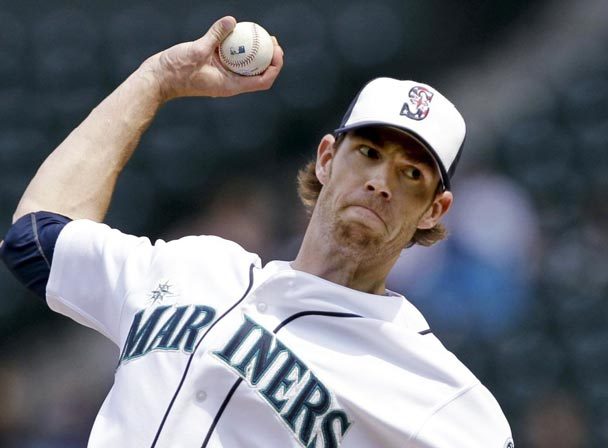Doug Fister, Velocity, Strikeouts, and Hard Work

Seattle Mariners’ starting pitcher Doug Fister is well-known for being a soft-tossing righty who gets guys out as a control/command pitcher. Except, in 2011, that’s not necessarily true. Fister’s average fastball velocity is up over 1 MPH in 2011 when compared to 2009 and 2010, and this doesn’t even control for the fact that pitchers as a whole have slower fastball velocities in the early months of the season. (Nor does it control for weather, which plays a role – and we’ve had inclement weather this year.)
Geoff Baker of the Seattle Times interviewed Doug Fister briefly, where Fister said:
“I have been putting in a lot of work in the weight room,” Fister said. “I’ve spent a lot of time lifting, conditioning and throwing. So, yeah, I feel a lot stronger this year. I’m in good shape. We’ll see where it takes us.”
On Monday’s start, Doug Fister’s four-seam fastball was around 91-93 MPH and not 88-90 MPH. What’s the difference between those two numbers? A huge jump. Fastball velocity does not follow a linear curve; the difference between an 88 MPH fastball and a 93 MPH fastball is not the difference between an 80 MPH fastball and a 85 MPH fastball. It’s a much larger – and more effective – improvement. Fastball velocity is positively correlated with strikeout rate at the major league level, and so every tick a pitcher can pick up makes a huge difference. It might mean the difference between staying in the big leagues and being demoted to the minors, never to return.
While we don’t know exactly what Doug Fister was doing for his strength, conditioning, and throwing program, we know he’s been doing more of it. And we also know that the Seattle Mariners use Dr. Marcus Elliot’s programs for many of their athletes, which revolves around free weights, medicine balls, and integrating biomechanical analysis concepts into their training methodologies.
Train Hard, Throw Hard
Pretty simple conclusion – if you train hard, you’ll throw hard. Consider that Doug Fister is an elite baseball athlete already flirting with 90 MPH and yet he was able to add velocity by simple training harder. What kind of improvements can the average prep/college pitcher make if he got on a smart training program and worked his butt off?
Comment section